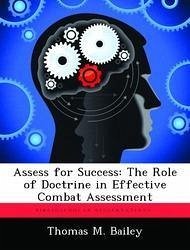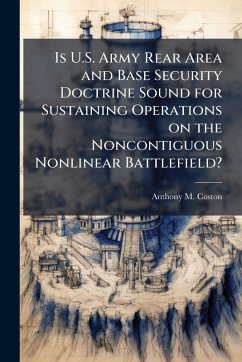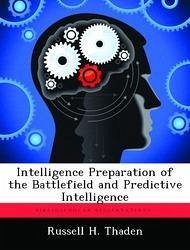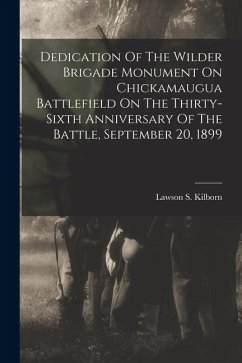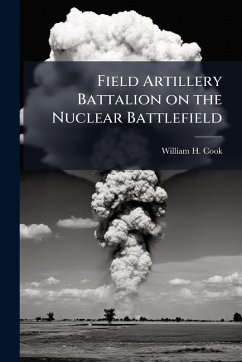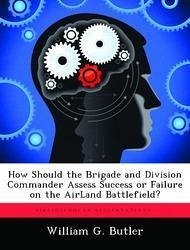
How Should the Brigade and Division Commander Assess Success or Failure on the AirLand Battlefield?
Versandkostenfrei!
Versandfertig in über 4 Wochen
14,99 €
inkl. MwSt.

PAYBACK Punkte
7 °P sammeln!
This monograph deals with the assessment process during the course of battle. The accuracy of assessment can mean the difference in success or failure in combat. To enhance the potential for success the commander must have a method to assess the progress of battle. A method of assessment provides information from which the commander can make decisions during the course of battle. If the assessment process is absent or faulty there is a greater chance that the decisions made will be counter-productive to the accomplishment of the mission. Current US Army doctrine does not address the question o...
This monograph deals with the assessment process during the course of battle. The accuracy of assessment can mean the difference in success or failure in combat. To enhance the potential for success the commander must have a method to assess the progress of battle. A method of assessment provides information from which the commander can make decisions during the course of battle. If the assessment process is absent or faulty there is a greater chance that the decisions made will be counter-productive to the accomplishment of the mission. Current US Army doctrine does not address the question of how to assess the progress of battle. Military theory provides a foundation and a general direction to focus a potential assessment process. History provides examples of battles where the successful commanders had an adequate assessment process and unsuccessful commanders failed to recognize success or failure due to an inadequate assessment process. This paper culls out from military theory and historical examples principles for assessing the progress of battle. It concludes with a recommended assessment method. The recommended method incorporates the physical, cybernetic, and moral domains of battle with the elements of combat power and the historical principles of effective assessment processes. The study then briefly examines the implications of this process for contemporary doctrine. This work has been selected by scholars as being culturally important, and is part of the knowledge base of civilization as we know it. This work was reproduced from the original artifact, and remains as true to the original work as possible. Therefore, you will see the original copyright references, library stamps (as most of these works have been housed in our most important libraries around the world), and other notations in the work. This work is in the public domain in the United States of America, and possibly other nations. Within the United States, you may freely copy and distribute this work, as no entity (individual or corporate) has a copyright on the body of the work. As a reproduction of a historical artifact, this work may contain missing or blurred pages, poor pictures, errant marks, etc. Scholars believe, and we concur, that this work is important enough to be preserved, reproduced, and made generally available to the public. We appreciate your support of the preservation process, and thank you for being an important part of keeping this knowledge alive and relevant.



